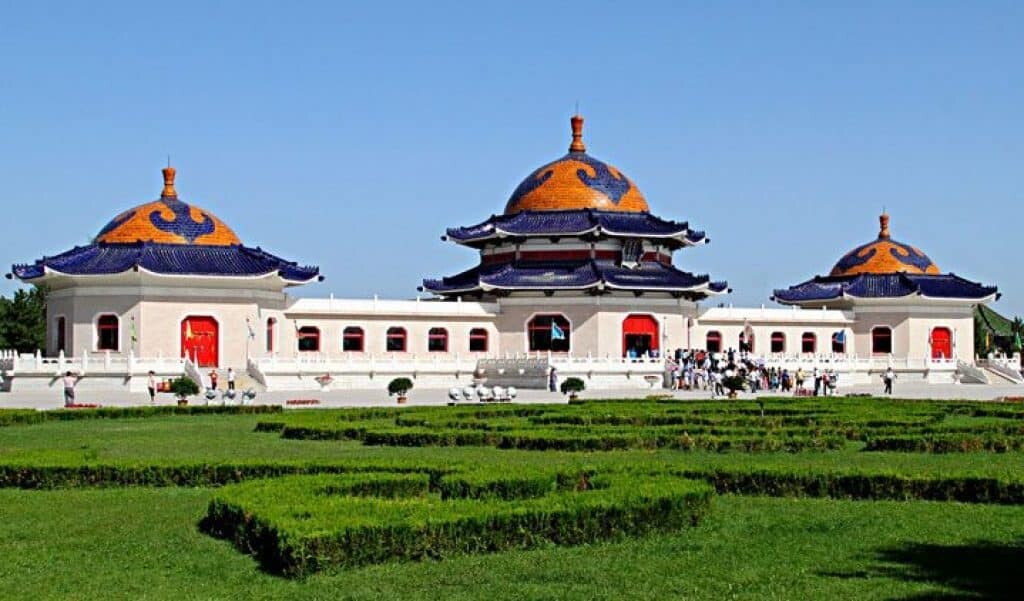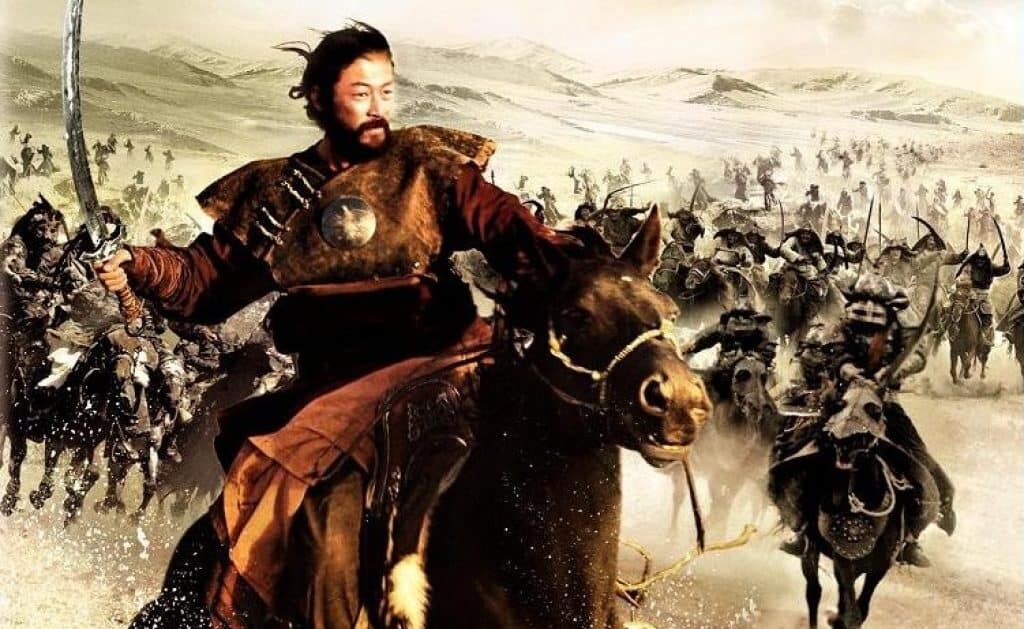Very few men have ever accomplished so much in so little time. Genghis Khan had conquered an empire that spanned the Black Sea to Beijing and Russia to Tibet by the time he was 44 years old. He was born in Mongolia circa 1162 and died in 1227. As the third-oldest son of Yesugei, leader of the Borjigin clan, Khan seemed destined for greatness. Yesugei was killed by an enemy tribe when Khan was only 9 years old, and this had a profound effect on him. The angry child would grow up to be a man that his people feared and adulated for his immense power and ferocity. However, many details about him vanished in history. Here are 5 Genghis Khan facts that may surprise you.
5 Genghis Khan Facts:
The Real Name of Genghis Khan
The general public knows him as Genghis Khan. But Genghis Khan was not his real name. Khan’s birth name was “Temujin” which means “of iron” or “blacksmith.” According to the Secret History, “Temujin” was named after the Tatar Chieftain, Temüjin-üge, who his father had captured.
He came to be known as Genghis Khan after becoming the leader of the Mongols at a tribal meeting in 1206. The word Khan simply means ruler or leader. Historians are still unsure of what “Genghis” means. But in context, it is usually translated as a “Universal Ruler.”
His Physical Appearance
Despite being such an influential and fascinating figure in history, facts about Genghis Khan’s personal life and physical appearance are scarce. Unfortunately, no portraits or sculptures of him survived for us to see how he really looked. Whatever little is known by historians is very much contradictory.
Most history books describe Khan as tall and strong with a flowing mane of hair and a long bushy beard. The most surprising description comes from Rashid Al-Din, the 14th-century Persian historian. He claimed Genghis Khan had red hair and green eyes. Since Rashid Al-Din never met Khan in person, his account of Khan’s description is rather questionable. However, these features were not unheard of among the ethnically diverse Mongols.
Cause of Death
Although it is well-known that he died in 1227, facts about Genghis Khan’s exact cause of death remains a mystery. Some accounts state that he fell off his horse while on a hunt and sustained heavy injuries that ultimately caused his death. Marco Polo wrote that Khan died from an infected arrow wound he received on the knee during his final fight. A few others say he died of respiratory disease. Another possibly false account says that Genghis Khan was captured and murdered when he tried to force himself on a Chinese Princess.
His Sacred Place of Burial
Of all the Genghis Khan facts, perhaps his burial place is the most puzzling and enticing. Many people have attempted to find his tomb. However, Khan had ordered that the location remain a complete secret in order to ensure that his afterlife would be peaceful and his final resting place undisturbed. According to legend, as the funeral procession traveled to the gravesite, the accompanying 800 soldiers slaughtered everyone they came in contact with along the way. They then repeatedly rode horses over his grave to help conceal it and a river was diverted over Genghis Khan’s grave to make it impossible to find. To this date, Genghis Khan’s burial place remains a mystery.

He Practiced Religious Tolerance
The last of the Genghis Khan facts may be the most shocking. Khan wanted peace and was very tolerant. During the height of the Mongolian Empire, Genghis Khan controlled all of the Silk Road. He had brilliantly formed a vast military made up of men (and some women) from all areas of his reign. Additionally, he strategically placed strongholds at a number of points to ensure his empire’s strength. There were merchants of many countries, cultures, and religions utilizing the Silk Road, and because Genghis Khan oversaw the flow of immense wealth, it was important to maintain peace along the route. Thus, during a time of enduring religious wars and Crusades in the west, Khan promoted tolerance of differing views and cultures.
The Legacy of His Memory
Although we have only chosen 5 Genghis Khan facts for this article, there is much about him worthy of study. He was one of the most fascinating characters in history who accomplished truly great things in his lifetime. His succeeding generations were unable to maintain peace amongst themselves, and their constant strife over control of the empire eventually crushed Khan’s legacy. Today, Mongolia is a fraction of what the empire used to be. However, for them, he is a national hero. To the rest of the world, he will always be known as the paradoxical warrior Mongol who brought peace to the Silk Road.
References:
Bio
Asia for Educators/Columbia University
Academic.mu.edu
Updated by HM editorial staff February 9, 2017
